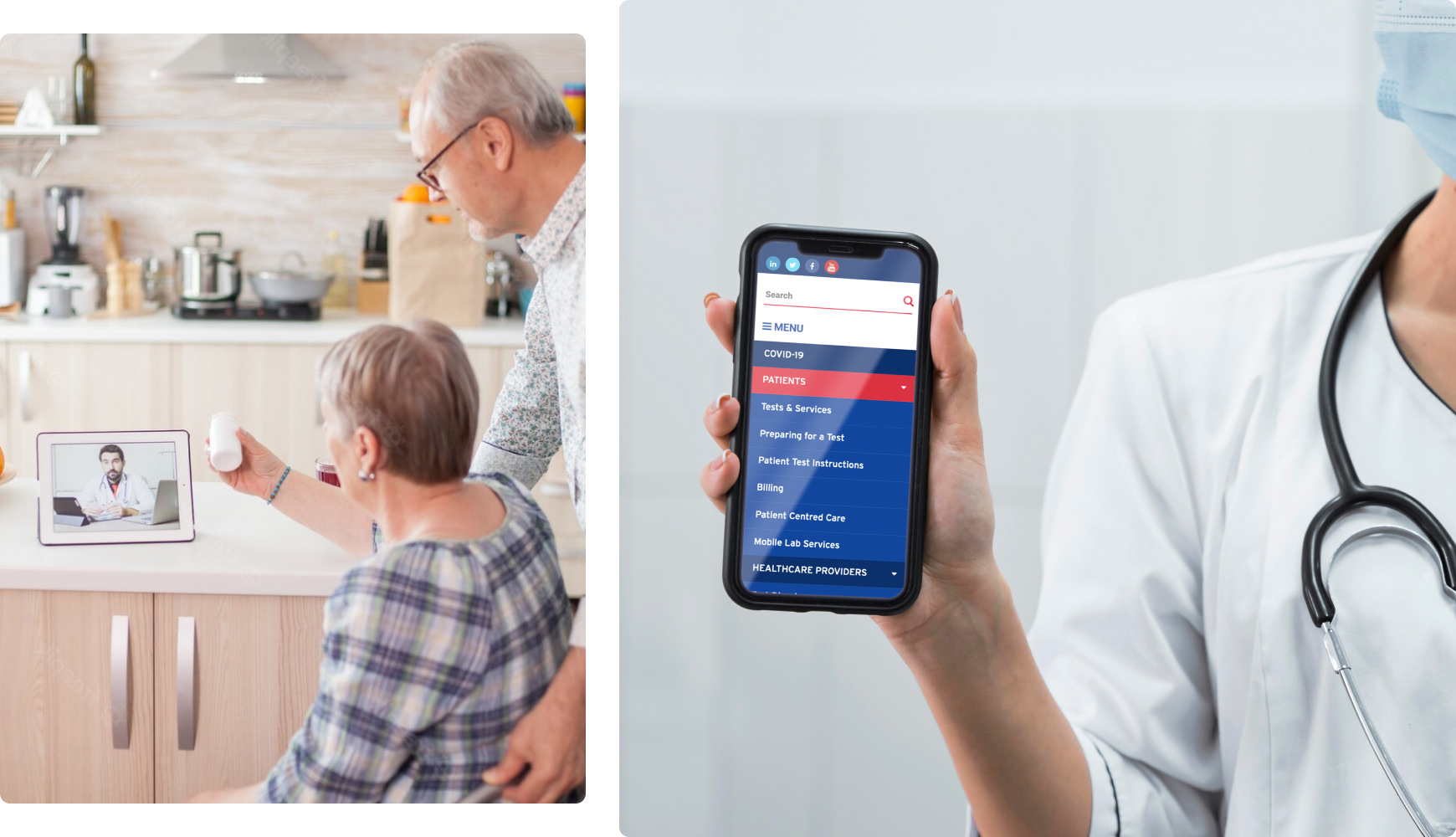
Do you want to address key components that make a good healthcare website? In this post, we discuss what issues you can tackle with a website redesign and how it can affect your business in a positive way.
Healthcare providers naturally focus primarily on the quality of service rather than the quality of their website experience. Therefore, website design modernization and innovation is often neglected in the healthcare industry.
Perhaps it’s also been a while since you had a website redesign. The average lifespan of the today’s website is around 3 years. What if your website has become outdated, cluttered, non-compliant, offers no real value to users and to your business? There are quite a few symptoms and reasons why your website might need a change.
If you’re on the fence, let’s explore these reasons together. It’s a good time to redesign if you want to:
1. Increase engagement and trust
Patients have become increasingly more demanding of the level of involvement in their medical care. Now, they want to be active participants in their health outcomes. Your website can be a starting point where you position your service as a two-way street.
There are numerous strategies that allow you to integrate patients more broadly, build relationships between patients and specialists, and create a trust-building environment. For example, design the website from the perspective of an average medical consumer, include robust search functionality, and relevant content, add a sense of familiarity through branding, show testimonials, display emotional and relevant imagery, put specialists’ names to faces, and more.
 2. Make the website more accessible
2. Make the website more accessible
A good portion of healthcare website users is made of seniors and people with disabilities. Their pattern of browsing websites and handling technology, in general, is very different compared to users in other industries and generations. Whether a person has difficulty seeing a screen, using a computer mouse, or reading, it’s imperative to remove those access barriers.
With a smart redesign, you can ensure all existing and future patients will get a bespoke user experience. It may be through integrating technology, using inclusive content formats, choosing optimal colour combinations, scaling text, and more.
3. Improve patient experience
As we already pointed out, quality healthcare doesn’t automatically translate to better patient satisfaction. To ensure a positive response to service delivery, you also need to ensure all digital experiences are up to par.
Here are a few questions to assess how well your website upholds the quality of patient experience:
- Does the website support a patient’s end-to-end journey, including both offline and online activities? For example, planning a visit, booking it online and visiting the medical office.
- Does the UI design enhance your website’s usability?
- Can patients easily find the information or use the service they are looking for?
- Is the website mobile-friendly? Does it adjust to all smartphones, tablets, and other devices?
Ideally, you should have affirmative answers to all of these questions. If you find that your website is lacking in certain areas, tackle them with the web design team.
 4. Ensure security and compliance
4. Ensure security and compliance
Providers are responsible for ensuring their website’s security and hosting environments are meeting the required standards. It’s also worth mentioning that the pressure is coming from both authorities that enforce data protection and individuals who want to preserve their privacy rights.
The range of activities can involve the use of encryption technology, CMS upgrades, updates, patches, firewalls, intrusion detection systems, and more. Overall, you can introduce a number of security-first features to keep patients’ entire health data safe (treatments, procedures, prescriptions, lab tests, etc.).
 5. Introduce or update site features and third-party tools
5. Introduce or update site features and third-party tools
Prioritizing the needs of your patients is a major motivator to extend your website’s functionality. Depending on the level of support you want to bring forward during the redesign, you can integrate:
- Access to medical records
- Appointment booking
- Digital communication tools
- Online payments
- Remote medical care, patient monitoring (telehealth and telemedicine)
- Educational tools, centralized health information hubs
- Digital products support
- Interactive systems
- Social media widgets
A wide enough range of features ensures that every person who contacts your organization gets the support they need, whether it’s a visitor looking for treatment information or a patient wishing to book an appointment at your facility.
Start the redesign process with Convergine
If any of the reasons above reflect your goals, we’d love to help you achieve them with a strategic, expert website redesign. Our team at Convergine has a unique and in-depth experience and expertise in the healthcare niche and can deliver solutions our clients are proud of:
- A user-centric, high-performing redesign for Rocky Mountain Analytical
- A brand-aligned, intuitive website for Montreal Dermatology Research Institute
- Easy navigation, high-quality imagery, and seamless integrations for Fresenius Medical Care
These and other projects have proven our capability to balance key characteristics of a modern website — ease of use, smooth performance, rich functionality, and more. Besides, we’re already familiar with websites, apps and digital infrastructure requirements and gaps in healthcare, which offers us a headstart in all future projects.
Reach out to discover what we can do for you!




